City Point Railroad
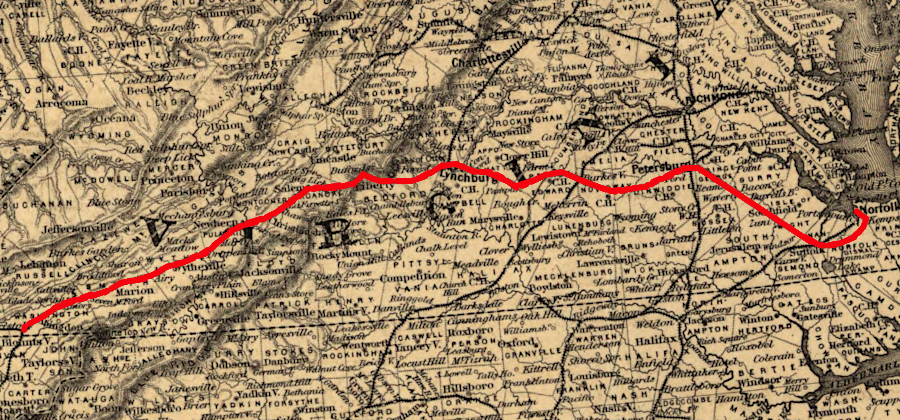
the Atlantic, Mississippi & Ohio Railroad combined three railroads to connect Norfolk to Bristol
Source: Library of Congress, A map showing the Atlantic Mississippi & Ohio R.R. and its connections from Norfolk to Cumberland Gap via Bristol (G.W. & C.B. Colton & Co., 1867)
The General Assembly chartered the City Point Railroad in 1836.1
"Corporate Timeline of the Norfolk & Western Railway," Norfolk and Western Historical Society, https://www.nwhs.org/nw_timeline.php (last checked January 8, 2019)
The nine miles of track connected downtown Petersburg with the deepwater docks at City Point, where the Appomattox River flowed into the James River. By stopping at City Point, ships could avoid the delays and risks of navigating the shallow Appomattox River shipping channel to the wharves in the center of Petersburg.
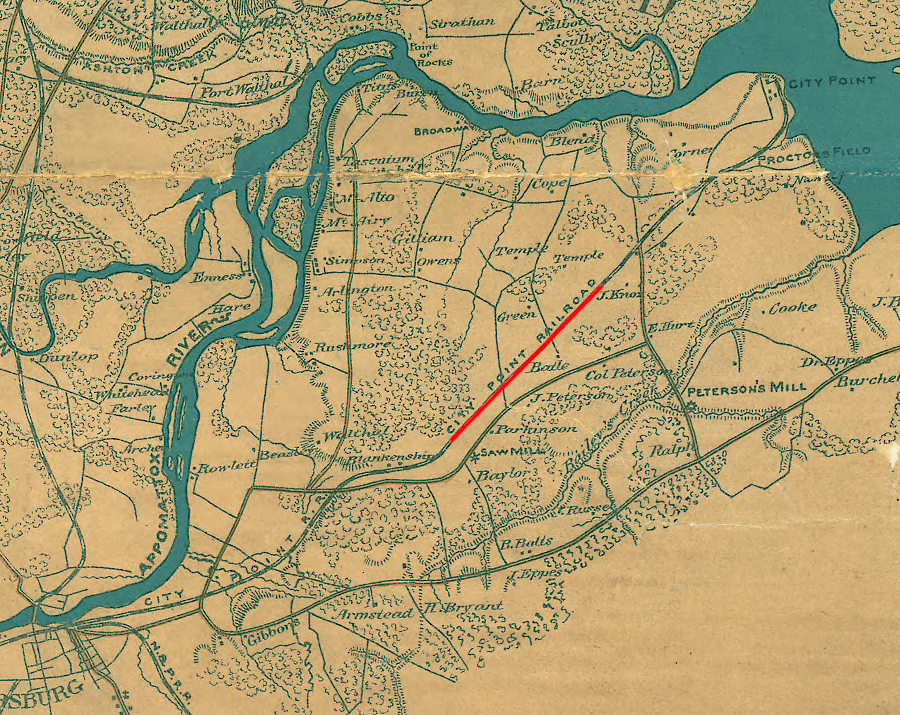
the City Point Railroad crossed through farmland and timberland
Source: Library of Congress, Map of the vicinity of Richmond and part of the Peninsula (by T. Sewell Ball and Albert H. Campbell, 1864)
The city purchased the railroad in 1847 and briefly renamed it the Appomattox Railroad. The Southside Railroad bought it from the city in 1854, so that new railroad from Lynchburg to Petersburg would have a direct connection to the James River.
At the start of the Civil War, the Union Navy prevented Confederate shipping from the importing/exporting via the James River and Chesapeake Bay. Shipping from Petersburg to Norfolk ended, and tracks of the old City Point Railroad were largely idle.
The Petersburg-City Point section of railroad regained significance in 1864. At the end of the Overland Campaign, the Union Army seized the Bermuda Hundred peninsula and besieged Petersburg. The shipping route up the James River was restored, and City Point became a major supply depot for the Union Army. General Ulysses S. Grant established his headquarters on the bluff there, using it until General Robert E. Lee ordered the Confederates to abandon Petersburg on April 3, 1865.
The US Military Railroad used the route of the old City Point Railroad to deliver supplies to the front lines in trenches and forts near Petersburg. Rail removed from the Richmond & York River Railroad was used to restore the track, and railroad operations began again on July 7, 1864.
The extraordinarily busy Union Army Quartermaster Corps relied heavily upon the railroad to move both men and material. Using wood-burning locomotives reduced the number of mules required to haul wagons on the muddy roads, and reduced the amount of hay that had to be brought by ship up the James River. Each train carried the equivalent of 100 wagons, which would have required 600 mules.
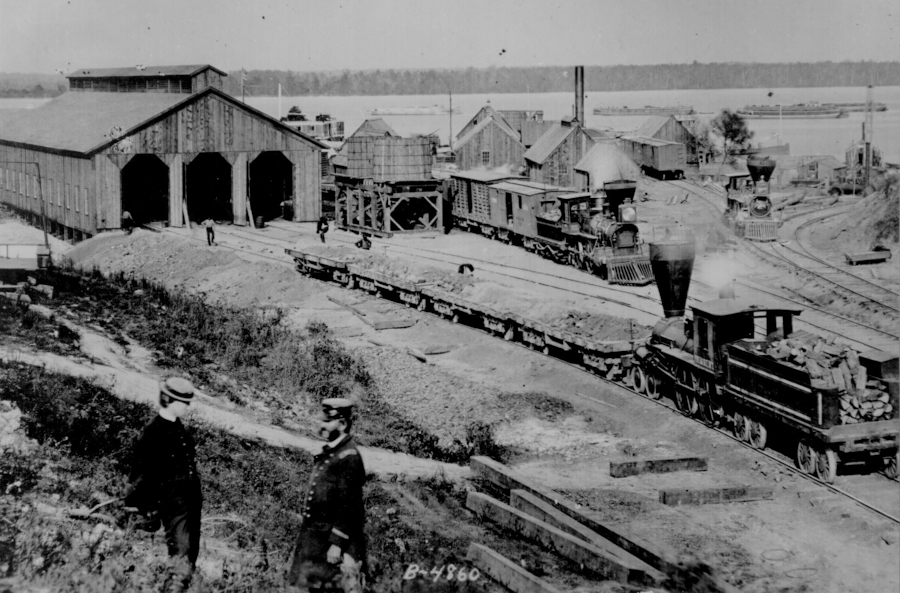
the US Military Railroad took control of the track at City Point in 1864
Source: National Archives, Depot of the U.S. Military Railroads, City Point, Va. (1864)
Operations were streamlined by filling railroad cars with supplies at various ports, floating the fully-loaded cars on barges to City Point, and rolling the cars from the barge directly on tracks built out onto the wharves.2
"Peterburg's Railroads - The City Point Railroad," Random Thoughts on History blog, March 23, 2018, http://randomthoughtsonhistory.blogspot.com/2018/03/peterburgs-railroads-city-point-railroad.html; "City Point & Army Railroad," Civil War in the East, http://civilwarintheeast.com/things/city-point-army-railroad/ (last checked January 8, 2019)
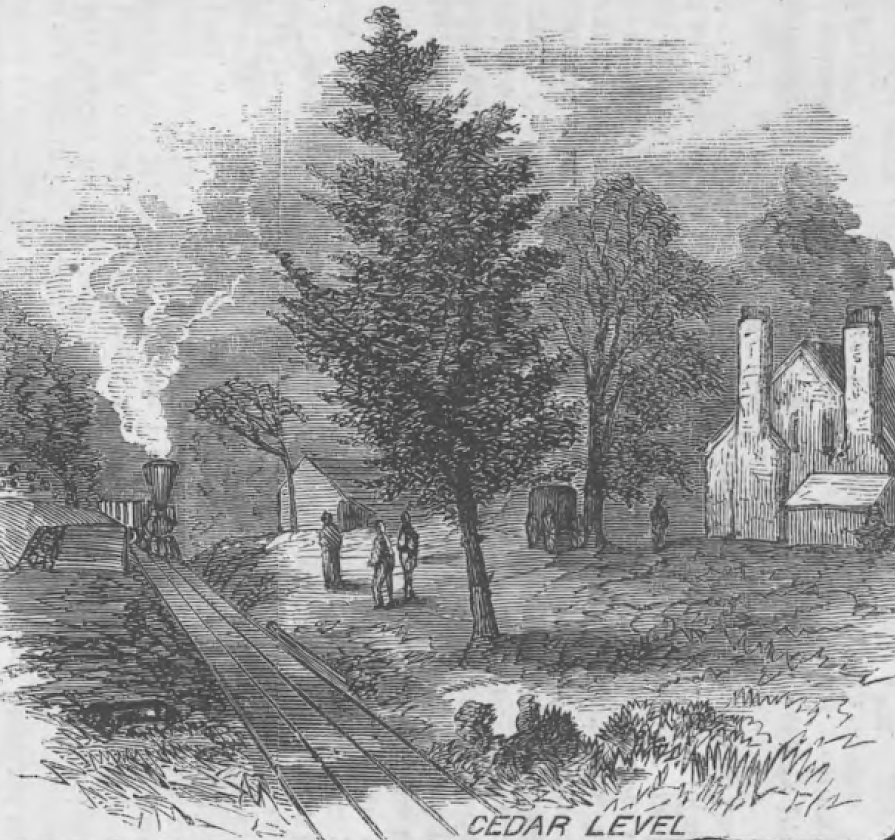
Cedar Level was one of 10 stations established by the US Military Railroad on the City Point Railroad and its extension around the siege line
Source: HathiTrust, View of the stations of Grant's military railroad (December 24, 1864, p.821)
The US Military Railroad extended track past the railroad's Pitkin Station, with branches running parallel to the siege lines until there were 22 miles of track. The first extension, the nine-mile Army Line from Pitkin Station to the Weldon Railroad, was completed in the first ten days of September, 1864. The trains were within the range of Confederate cannon, so a line of earthworks was constructed parallel to the tracks to provide shelter.
The two and a quarter mile Patrick Branch was completed in early November. It extended the railroad from General Warren's headquarters at Yellow House (Glove Tavern) to the Peebles House. Another two and a quarter mile branch, the "Gregg Branch of the City Point and Army Line," was built in December-January. It stretched Hancock Station on the Army Line to the headquarters of a division of the Fifth Army Corps, commanded by General Crawford.
As Union forces advanced further west to encircle Petersburg, the Army Line was extended. In February 1865, the US Military Railroad rebuilt the
2
"United States Military Railroad -- City Point & Army Line," The Petersburg Project, http://www.petersburgproject.org/u-s-military-railroad.html (last checked July 4, 2020)
The temporary tracks were built quickly, with minimal investment in grading the route. A Union general wrote after the war:3
General Horace Porter, "Campaigning With Grant," The Century Illustrated Monthly Magazine, Volume 53, Number 6 (April, 1897), p.831, https://books.google.com/books?id=UzCgAAAAMAAJ (last checked January 8, 2019)
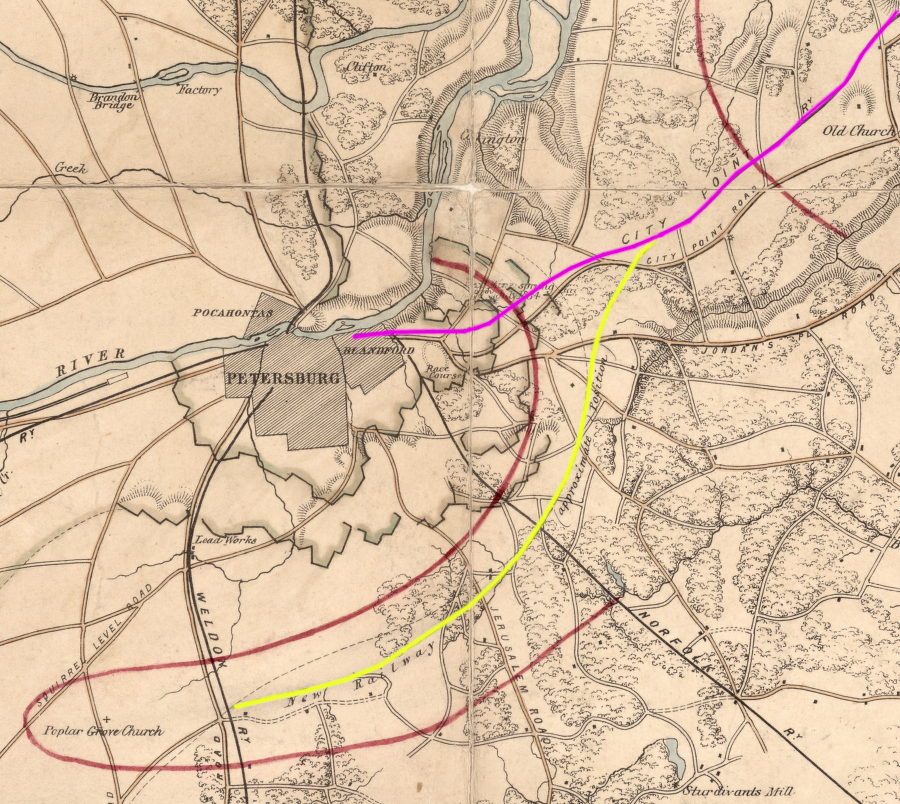
the US Military Railroad built nine miles of track (yellow) west of Pitkin Station in 1864 to extend the City Point Railroad to the Weldon Railroad
Source: Library of Congress, Map of the neighbourhood of Richmond and Petersburg, Virginia (by A. C. Cooke and Henry James, 1864)
- It ran up hill and down dale, and its undulations were so marked that a train moving along it looked in the distance like a fly crawling over a corrugated washboard.
A large, long-distance mortar called The Dictator was moved on that track by railcar, so it could bombard the Confederate defense lines.
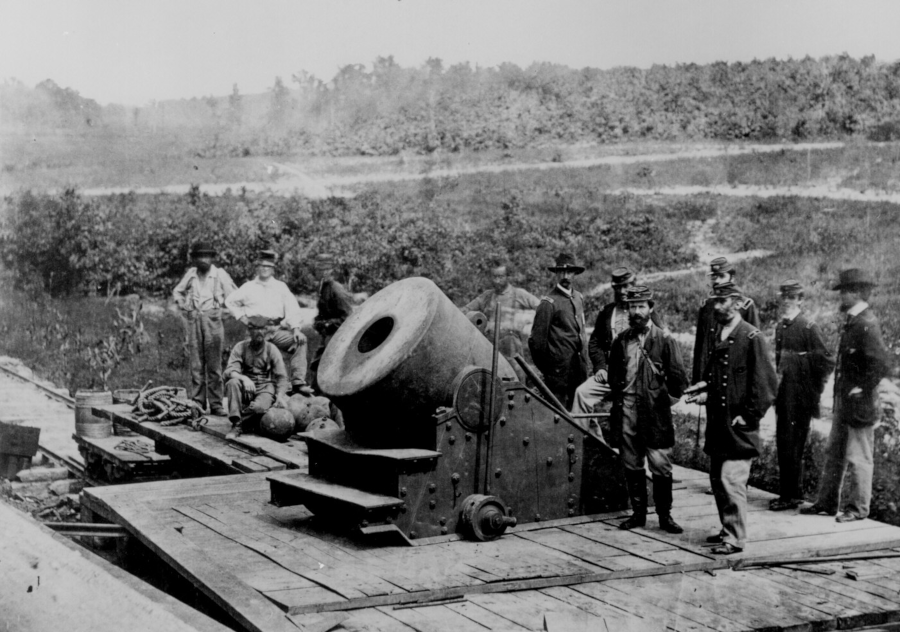
the Dictator was transported by rail to be within striking range of Confederate defenses
Source: National Archives, The 13-inch mortar "Dictator" mounted on a railroad flatcar before Petersburg, Va. (October 1864)
Links
References
1.
2.
3.
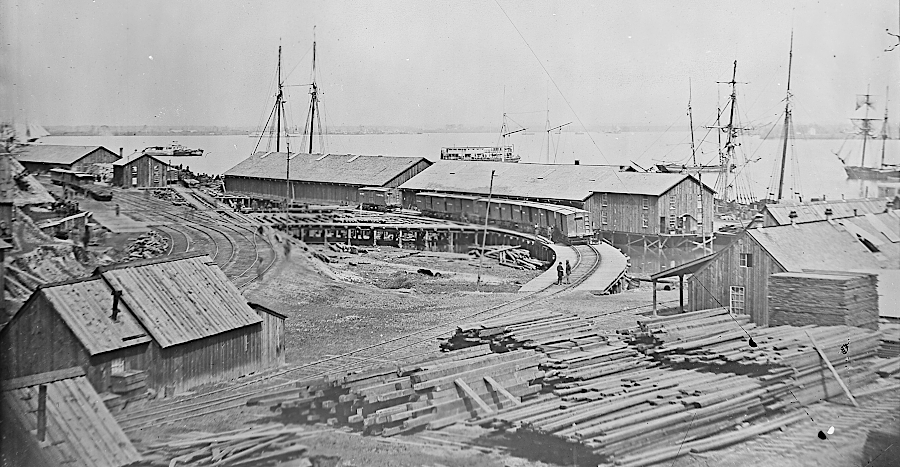
the wharves at City Point, the eastern terminus of the City Point Railroad, facilitated transport of Union Army supplies in 1864-65
Source: National Archives, View of City Point, Va. 1864
Historic and Modern Railroads in Virginia
Railroads of Virginia
Virginia Places






